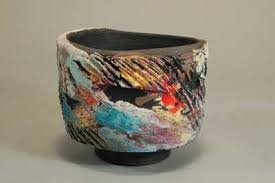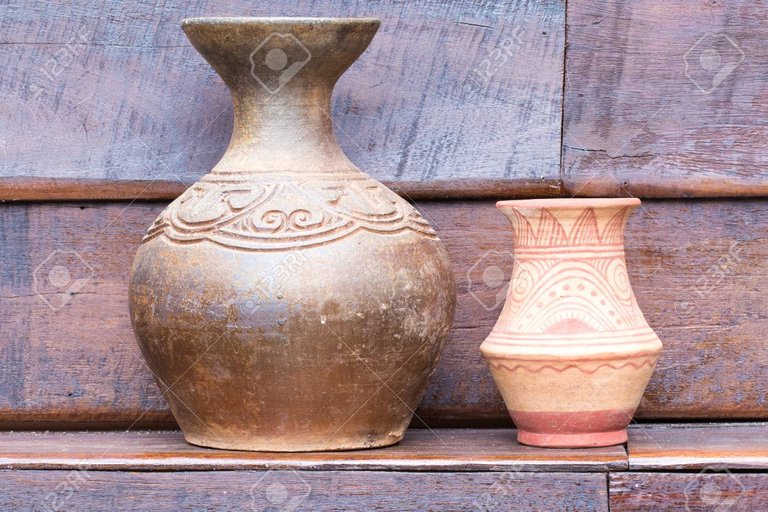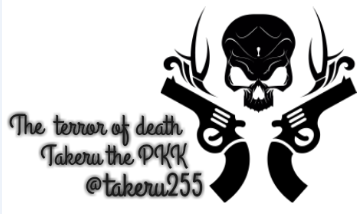Ceramic; conservation and restoration
Ceramics is an art that is as old as our human history, it reflects the use of clay, earthenware or any other ceramic material that, when molded and exposed to heat, produces the hardening of the same leaving a firm object . This object is used as a decorative or utilitarian element, in the times of yesteryear they served as containers to store water or food.
Indeed, I want to highlight Japanese pottery, which, although it was heavily influenced by China and Korea, has its special touch, especially in cups and teapots for tea ceremonies, where those who enjoyed the ritual drank in the vessels made by themselves, this process is known as Raku.

The method is quite interesting and captivating, after generating the piece they take it to a small oven at a temperature of about 900º which is the standard measure depending on the raw material of the object, when it reaches its maximum cooking point they take it to red alive, and then pass it to a container full of wood shavings or dried leaves of newspaper or tree, this allows the smoke that is created from the chips to melt and penetrate the piece, to, step followed, lower sharply the temperature with water generating a magnificence in texture, color, nuances and tones.
The manufacturing techniques are diverse, some took a portion of clay in which they introduced the thumb and pressing they were cupping it until the object was achieved, and others used the molding with the lathe, where the clay was placed on top of the disc, allowing it to rotate, so that the potter could make the vessel, is a technique that is still being implemented today.
The manufacturing helps a lot to determine, classify and recognize physical characteristics when evaluating the object, since, like any material, it is not exempt from factors that support its deterioration, these causes are usually the degradation of the material by its use or environment where it was found, environmental factors such as light, temperature, humidity, as well as its clumsy manipulation which can cost a partial or total loss to the object.

In this way, to avoid the perjury that can lead to the above factors, it is necessary to manage a knowledge about the conservation and restoration of such precious objects, for this purpose it is studied, as I had previously mentioned the manufacture through X-rays, petrographic microscope , scanning electron microscope, among others, using a small sample taken from the object to determine the mineral from which it was created.
Likewise, it can be said that ceramics have a very rich history, because, like every artistic product, they worked in different ways depending on the continent in which they were, in addition to the decoration that attributed a unique personality.
The restoration procedure explores a superficial cleaning through soft brushes to remove dust, after determining the material of the object it will be seen if distilled water and acetone with swabs can be used to remove the most intense stains.
In case the piece is fragmented, the use of masking tape will be used to verify that the volumes are where they should be, followed by a careful application of glue, if you have any missing one, a thorough study of the object is carried out and after to obtain the necessary data, a general volume of the piece will be outlined with the material that best suits, in the absence of color it will be reintegrated from natural pigments. To conserve these pieces it is necessary to maintain an adequate temperature inside the enclosure where it is located, also taking care of the humidity and the lights, so that they can be admired by people and last over the years.

https://es.123rf.com/photo_82384362_cer%C3%A1mica-antigua.html
https://es.123rf.com/photo_66942543_cer%C3%A1mica-antigua-de-ban-chiang-tailandia.html

Consider to follow our curation trail on steemauto We thanks all the support.
To all of you artists out here at Steemit! If you ever are lost please join Bokura No Digital World at our discord chat

Repollo is a Project that Works based on MEMBERSHIPS from the users that delegate SP and/or join the Curation TRAIL. Repollo is supported by 2 steemit witnesses, @cervantes y @upheaver, if you upvote them as Steemit Witness you support better rewards for the members of the community.

The Repollo Family was made by Saouri Coronado - @Sawcraz.art Inspired in the original characters made by @eddiespino You can see the original characters here and you can also see the making of @sawcraz.art here She's open to comition with no restriction!!
All Rights Reserved - @Takeru255 and @Sawcraz.art







Interesting and educational.
Pottery is a great art.
Thanks for the share.
Awesome
You got a 62.94% upvote from @ocdb courtesy of @takeru255! :)
@ocdb is a non-profit bidbot for whitelisted Steemians, current min bid is 1.5 SBD and max bid is 10 SBD and the equivalent amount in STEEM.
Check our website https://thegoodwhales.io/ for the whitelist, queue and delegation info. Join our Discord channel for more information.
If you like what @ocd does, consider voting for ocd-witness through SteemConnect or on the Steemit Witnesses page. :)